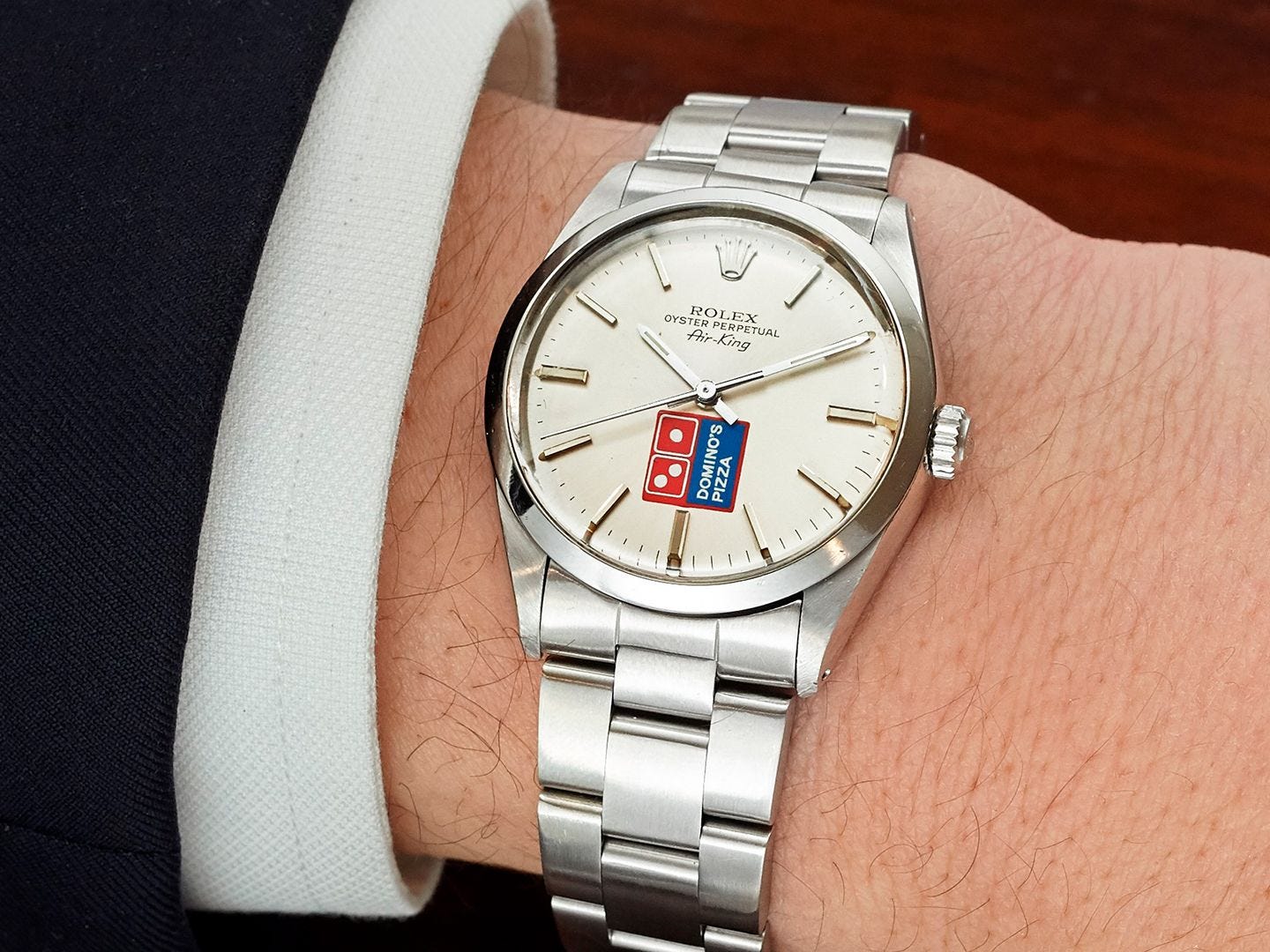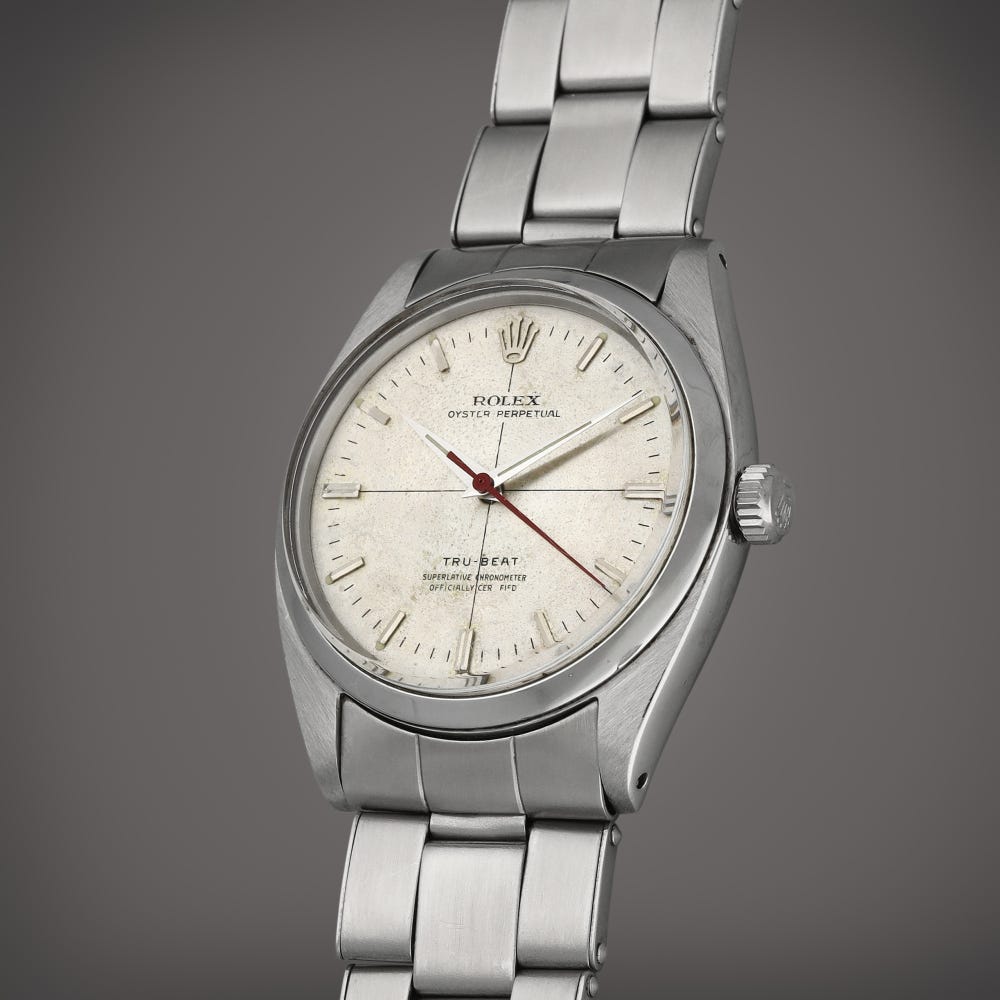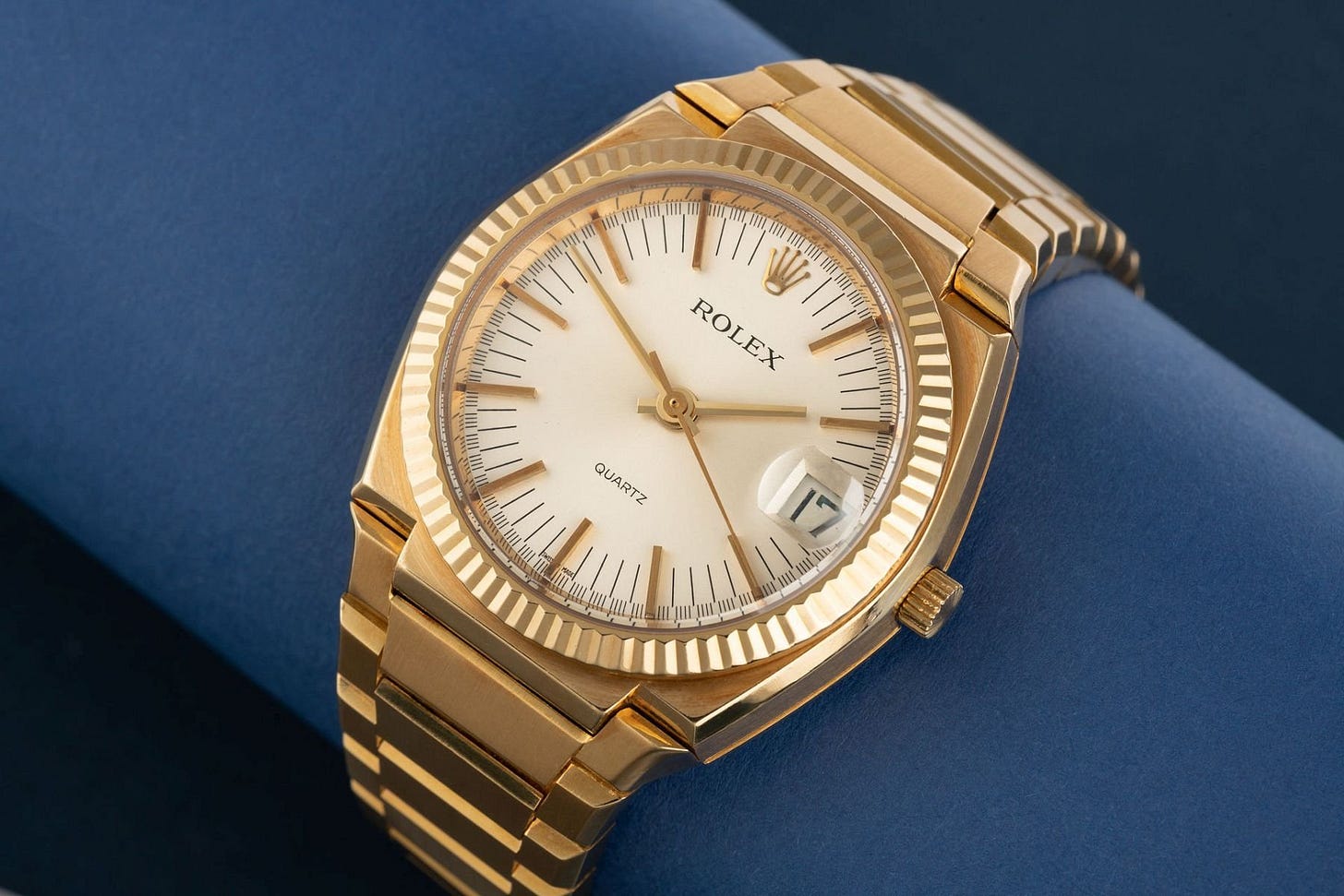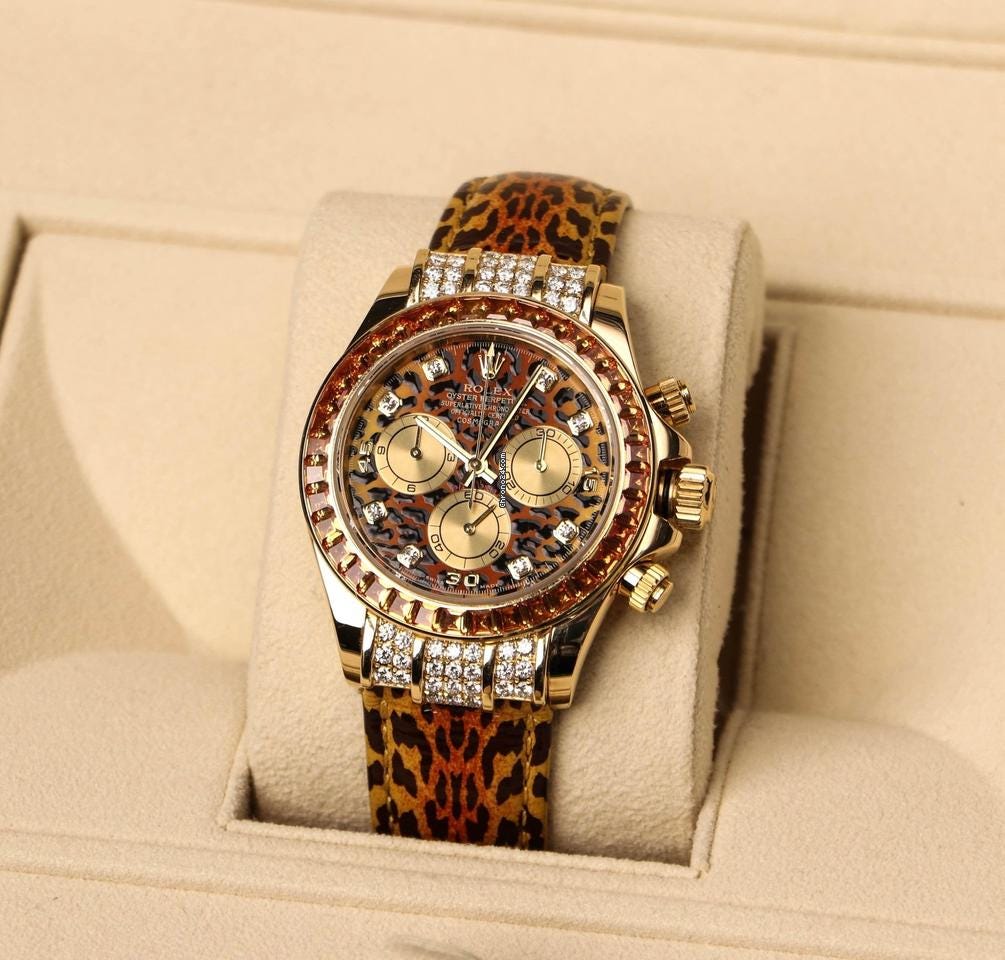The Forgotten Rolex Experiments
The strange detours Rolex took — and why you rarely see them now.
Rolex is famous for playing it safe.
The Submariner, the Daytona, the Datejust — their designs have changed so little over the decades that you could put a 1960s version next to a modern one and, unless you’re a watch nerd, barely notice the difference.
That consistency is the secret to Rolex’s status. But every now and then, even the most conservative brand in the world decides to get weird.
In the past century, Rolex has made bizarre corporate giveaways, flirted with quartz technology, experimented with moonphases, and produced design choices so loud they could be seen from space.
Some of these watches failed commercially. Others just didn’t fit the Rolex image. But now? These “misfits” are often among the most fascinating — and valuable — watches the brand has ever made.
The Misfits of the Rolex World
1) Domino’s Air-King
Picture this: you sell enough pizza to hit the top of Domino’s corporate leaderboard… and your prize isn’t a gold ring, a trip to Hawaii, or a car. Nope. You get a Rolex.
But not just any Rolex — an Air-King with the Domino’s Pizza logo printed right on the dial.
This wasn’t some aftermarket customization. Rolex made these in the factory at Domino’s request as an incentive program for franchisees.
Why it matters: It’s the only known Rolex with a fast-food logo — an odd collision between haute horology and corporate swag culture.
Estimated Market Value: $5,000–$10,000 today, but mint, fully documented examples can go higher depending on provenance.
Story bonus: Many recipients shoved these watches in drawers or wore them daily without thinking twice. Decades later, collectors started hunting them down — and now they’re quirky trophy pieces.
2) Rolex Tru-Beat (Dead-Beat Seconds)
If you’ve seen a mechanical Rolex, you know the seconds hand usually sweeps smoothly. But the Tru-Beat? It ticked. One click per second, just like a quartz watch — except this was 1950s mechanical magic.
Why it matters: It was designed for doctors to time patient pulses more precisely. Unfortunately, its delicate movement was tricky to service, and it disappeared from the catalogue after a short run.
Estimated Market Value: $8,600–$12,800 at auction, though I’ve seen one listed as high as £20,650 (~$26k).
Story bonus: It used a special modification to Rolex’s Calibre 1030 — a strange hybrid of tool-watch practicality and novelty that doesn’t fit neatly anywhere in Rolex history.
3) Beta-21 & Oysterquartz
In the 1970s, quartz watches were killing Swiss mechanical watchmaking. Rolex joined a Swiss consortium to produce the Beta-21 movement — chunky, square-cased watches with date displays.
Then they went solo with the Oysterquartz — a sharp, integrated-bracelet design that looked nothing like the classic Oyster case.
Why it matters: These were Rolex’s loudest admission that quartz might be the future. Instead, it became a short-lived detour. By 2001, Oysterquartz was gone, and Rolex was back to fully mechanical production.
Estimated Market Value: Oysterquartz: $6k–$25k depending on dial and condition. Beta-21s are rarer — often landing in mid–five figures.
Story bonus: At the time, some journalists speculated Rolex might go quartz-only forever. History proved them wrong.
4) King Midas (Gérald Genta Design)
Rolex in solid gold is nothing new. But in the mid-1960s, they released the King Midas — a watch so heavy it could double as a paperweight, and so angular it looked like jewelry from a sci-fi movie.
It was designed by Gérald Genta (yes, the same man behind the Royal Oak and Nautilus) and famously worn by Elvis Presley and John Wayne.
Why it matters: It’s a pure statement piece — no rotating bezel, no sporty DNA, just unapologetic gold sculpture.
Estimated Market Value: $3.8k–$37.5k. The John Wayne example sold for around $26,290.
Story bonus: Sold in a Greek temple–style wooden box, the King Midas feels like something from an alternate Rolex universe.
5) Leopard Daytona
If the Daytona is a refined racing chronograph, the Leopard Daytona is its wild alter ego: leopard-print dial and strap, gem-set bezel, and more yellow sapphires than a jewelry store window.
Why it matters: It’s the antithesis of understated Rolex luxury — pure runway fashion on a chronograph base.
Recorded Auction Sale: Christie’s sold one for $176,400, blowing past its $40k–$60k estimate.
Story bonus: Celebrities like Paris Hilton and Elton John wore it, cementing its status as one of the most flamboyant Rolexes ever made.
Why These Watches Matter Now
Back when they were released, these models were either misunderstood or flat-out unpopular. That’s exactly why they’re collectible now.
Short production runs + memorable backstories = scarcity value.
Think about it: a Domino’s logo Air-King or a leopard-print Daytona might not have been “cool” at launch. But today, they’re conversation starters — the kinds of watches that make seasoned collectors stop and say, “Wait… what is that?”
The same could be true for today’s bold experiments. Maybe in 2075, some collector will be fighting over the Rainbow Daytona you scrolled past on Instagram.






